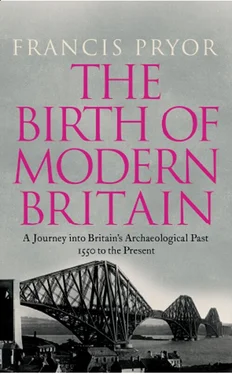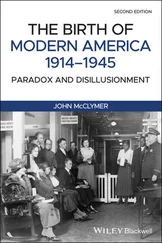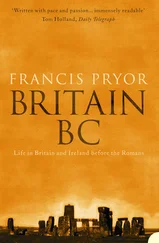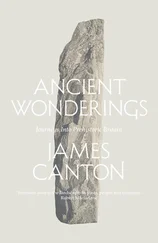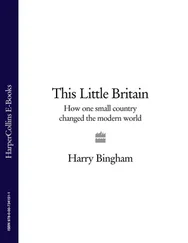If we examine the shapes and layout of these domestic ranges they can tell us a great deal about the social changes that were taking place in early modern times, especially if the excavations are on a reasonably large scale. A few small slit trenches might establish construction dates and that sort of thing, but one needs an entire range to be stripped and excavated if one is to understand how it was used. Happily, this is exactly what has happened in a fine Jacobean (formerly) country house now surrounded by the streets and dwellings of modern Birmingham. I had been aware for some time of the presence of a great house as one drove towards the city centre on that long stretch of raised road south of the M6, but, to be honest, I had dismissed it as something Victorian – which I’m now aware was an error on my part. But I’ve been back there since and taken a closer look, and to my surprise I was completely wrong. Aston Hall really is rather special: a large three-storey Jacobean house with prominent turrets and banks of chimneys, elevated on a natural terrace and still dominating the landscape, which, as I’ve said, consists mainly of modern urban buildings. The notable exception is the village of Aston’s medieval parish church nearby, and a small park, which manages to retain a reminder of the area’s once rural surroundings.
Today Aston Hall is run by Birmingham City Council Museums and Galleries and in 2009 it reopened after a £13 million programme of repair and refurbishment, which included extensive excavation. 24 As the digs were a part of a major project they took place on a suitably large scale. Anything else and the results would inevitably have proved less conclusive and, of course, far less exciting.
The house itself was built between 1618 and 1635 by Sir John Holte, probably to the designs of John Thorpe, and it represents a clear statement of the new relationship between master and servant that had developed in post-medieval times. 25 Had Aston Hall been built in the early fifteenth century the kitchens, pantries and other domestic rooms would have been inside the main buildings, together with servants’ accommodation which was not kept particularly separate from that of the owner’s family. Although the family would have dined at a separate high table, when eating on public occasions few efforts were made in the Middle Ages to separate the lives of the domestic staff from those they were serving. All of that changed quite rapidly in the later sixteenth and seventeenth centuries, when new houses were designed to keep the activities of resident domestic staff separate from the daily lives of the owner’s family.
In new houses of the seventeenth century, domestic staff would have been housed in their own quarters in either a basement or a separate wing and additional sleeping space would have been provided in the (often rather draughty) attics. For the first time, these various rooms would have been linked by their own network of stairs and passages which meant that the owner’s family need never contact a servant unless, that is, he or she wanted to. Similarly, although the kitchens remained in the main house (but very much within the domestic area), the rooms where other household activities took place, such as the brewhouse, stores, washing rooms, bakehouse and dairy were removed either to separate wings, or (as at Aston Hall) an altogether separate Service Range.
The Service Range at Aston was very carefully positioned at the foot of a slope some twenty-five metres from the main house, and largely concealed by a tall brick wall. It is interesting that Dugdale’s 1656 view of the house uses perspective to give the impression that the Stable Range is even more removed and it entirely conceals the Service Range. Indeed, guests at the great house need never have been aware that the Service Range even existed. The main house and its North Wing formed one side of the domestic Stable Court, which was open to the west but enclosed to north and east by the Service and Stable Ranges. Inside the North Wing were the kitchen, the wine and beer cellars, scullery and servants’ sleeping quarters on the upper floor. This arrangement meant that no guest or member of the owner’s family need ever have to look out onto the Stable Court.
In anthropological terms the increasing separation of ‘those upstairs’ from ‘them downstairs’ might be seen as hierarchical, but the developing social hierarchies did not stop there. Below stairs, and fully recognised by the owner’s family, we see an emerging ranked society in which senior household servants, such as the butler, who waited directly on the owner, the cook and housekeeper and others were accommodated within the domestic apartments of the main house, which at Aston Hall were in the North Wing. Junior servants would have to find their sleeping spaces in the Service Range or attics.
I must have read thousands of excavation reports and a high proportion of them have been almost unendurably dull. This sad situation has arisen because over the past twenty or so years, ever since changes in planning law made it compulsory for developers to pay for archaeological examination of sites they were about to destroy, large numbers of quite insignificant excavations have had to take place – and then reports be written up. In theory – and in practice, too – these small projects add to our sum of knowledge about a given region and in time they start to produce coherent stories. But it is not a rapid process and much of the work is, at best, humdrum. That is why most archaeological contractors leap at the chance of doing larger projects, where the element of new research is greater and where it might be possible to write a good, original report. And that is exactly what happened after the Aston Hall excavations, where the team from Birmingham University have combined evidence from the trenches with historical research to produce an absolutely fascinating story. I’ll be quite honest: before I started, I thought a paper about a dig on an abandoned service range would make extremely dry reading, but I was completely mistaken.
Конец ознакомительного фрагмента.
Текст предоставлен ООО «ЛитРес».
Прочитайте эту книгу целиком, купив полную легальную версию на ЛитРес.
Безопасно оплатить книгу можно банковской картой Visa, MasterCard, Maestro, со счета мобильного телефона, с платежного терминала, в салоне МТС или Связной, через PayPal, WebMoney, Яндекс.Деньги, QIWI Кошелек, бонусными картами или другим удобным Вам способом.
